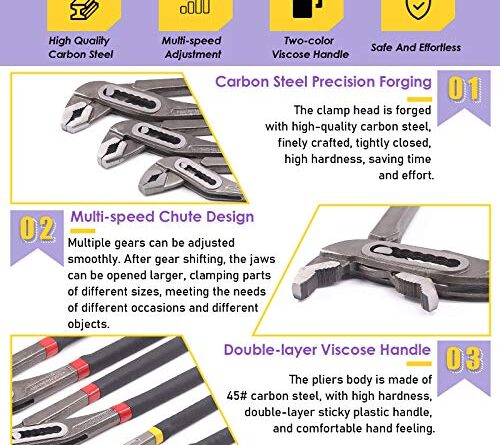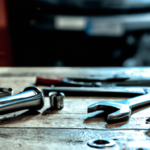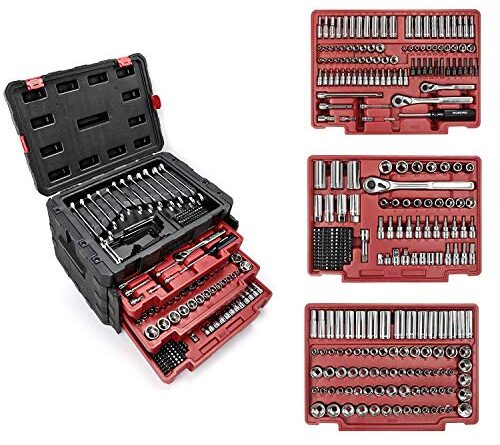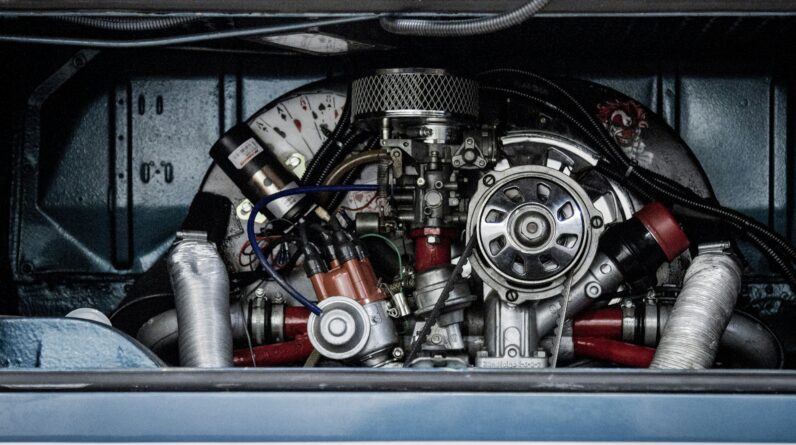
Disclaimer: This post may contain affiliate links. As an Amazon Associate, we earn from qualifying purchases.
Alligator wrench, also known as a monkey wrench, is a versatile tool that every handyman should have in their toolbox. This adjustable wrench gets its name from its gripping jaw, similar to that of an alligator. With its adjustable design, this wrench can fit bolts and nuts of various sizes, making it ideal for a wide range of tasks.
Its unique design and functionality make it a must-have tool for anyone who wants to tackle DIY projects or handle mechanical repairs with ease. An alligator wrench is a versatile tool that is commonly used for various mechanical and plumbing applications.
It is designed to provide a secure grip on different types of nuts and bolts, allowing for easy tightening and loosening. The name “alligator wrench” comes from its unique jaw shape which resembles the jaws of an alligator.
History of Alligator Wrenches
Origin
The origin of the alligator wrench can be traced back to the late 19th century. It was developed as an improvement on the traditional wrench, with a focus on providing a better grip on nuts and bolts of various sizes. The initial designs were rudimentary, but over time, the alligator wrench evolved into a highly functional tool.
Early Developments
In the early years, alligator wrenches were largely handmade by skilled craftsmen. These wrenches were predominantly used in industrial settings, where their effectiveness and efficiency quickly gained recognition. As demand grew, manufacturers began mass-producing alligator wrenches, making them more widely available to the general public.
Popularity and Use
The popularity of alligator wrenches soared during the 20th century as more individuals and industries recognized their versatility. They became a staple tool in plumbing, mechanical repairs, and automotive maintenance. The ability to grip different sizes of nuts and bolts with ease made the alligator wrench a go-to tool for professionals and DIY enthusiasts alike.
Design and Features
Jaw Shape
The distinct feature of an alligator wrench is its jaw shape. The jaws are serrated and articulated, resembling the teeth of an alligator. This design allows the wrench to grip nuts and bolts securely, preventing slippage during use. The serrated jaws are particularly effective when working with rusty or stubborn fasteners.
Adjustment Mechanism
Alligator wrenches typically feature an adjustable jaw mechanism. This allows users to easily change the size of the jaw opening to accommodate different sizes of nuts and bolts. The adjustment mechanism can vary between models, with some employing a sliding mechanism or a worm gear. Regardless of the specific mechanism, it enables quick and precise sizing adjustments.
Handle Length and Grip
The length of the handle on an alligator wrench can vary depending on the intended use. Longer handles provide increased leverage, making it easier to apply torque and loosen tightly fastened nuts and bolts. The handle may also have a non-slip grip, such as rubberized or textured material, to ensure a secure hold during use.
Types of Alligator Wrenches
Standard Alligator Wrench
The standard alligator wrench is the most basic and commonly used type. It features a straight handle and a fixed jaw size. These wrenches are available in various sizes to suit different applications and are a staple in many toolboxes.
S-shaped Alligator Wrench
The S-shaped alligator wrench is a variation that incorporates an ergonomic design. The handle is bent into an “S” shape, allowing for a more comfortable grip and improved leverage. This type of wrench is often favored by professionals who frequently work with nuts and bolts for extended periods.
Adjustable Alligator Wrench
The adjustable alligator wrench combines the convenience of an adjustable jaw with the ergonomic design of the S-shaped wrench. This versatile tool enables users to easily adjust the jaw opening while providing a comfortable grip. It offers the best of both worlds and is highly sought after by those who require flexibility in their applications.
Benefits and Advantages
Versatility
One of the key benefits of an alligator wrench is its versatility. It can grip nuts and bolts of various sizes, eliminating the need for multiple wrenches. This saves both time and space, making it a practical choice for both professionals and DIY enthusiasts.
Efficiency
The unique jaw shape and adjustable mechanism of the alligator wrench contribute to its efficiency. The serrated jaws provide a secure grip, preventing slippage and minimizing the risk of damage to fasteners. The ability to quickly adjust the jaw opening ensures a snug fit, allowing for efficient and effective tightening or loosening of nuts and bolts.
Durability
Alligator wrenches are typically constructed from high-quality materials such as steel or chrome-vanadium alloy. This ensures durability and longevity, even when subjected to heavy use. The sturdy construction of these wrenches allows them to withstand high torque levels, making them reliable tools for demanding applications.
Applications and Uses
Plumbing
Alligator wrenches are widely used in plumbing applications. They are particularly useful for working on pipe fittings, valves, and faucets. The ability to grip various sizes of nuts allows plumbers to efficiently complete their tasks with a single tool. Whether it’s fixing a leaky faucet or installing new plumbing fixtures, an alligator wrench is a must-have for any plumber.
Mechanical Repairs
Mechanics and technicians often rely on alligator wrenches for various mechanical repairs. These wrenches are ideal for working with bolts in tight spaces where access may be limited.
The adjustable jaw allows for precise sizing, ensuring a secure grip on fasteners. From fixing machinery to assembling equipment, the alligator wrench is a versatile tool in the mechanical field.
Automotive Maintenance
Automotive enthusiasts and professionals alike appreciate the convenience and efficiency of alligator wrenches in automotive maintenance tasks. Whether it’s changing tires, replacing brake pads, or performing engine repairs, these wrenches can tackle a wide range of automotive fasteners.
The ability to grip different sizes of nuts and bolts simplifies the process and reduces the need for multiple tools.
Common Misconceptions about Alligator Wrenches
Not Suitable for All Nuts and Bolts
Despite their versatility, alligator wrenches are not suitable for all types of nuts and bolts. They are most effective on hexagonal or square-shaped fasteners, while rounded or irregular shapes may pose a challenge. It is important to assess the type of fastener before using an alligator wrench to ensure a proper fit and grip.
Difficult to Use
Some people may assume that alligator wrenches are difficult to use due to their unique design. However, with a little practice and understanding of the tool’s features, they can be quite straightforward.
The adjustable jaw makes it easy to find the right size, and the serrated jaws provide a secure grip. With proper technique, an alligator wrench can be an efficient and user-friendly tool.
Safety Precautions
Proper Use and Technique
To ensure safety and prevent injuries, it is essential to use an alligator wrench correctly. Apply force in a controlled manner to avoid sudden slippage, which can lead to accidents. Always position the wrench on the nut or bolt securely, ensuring proper alignment before applying torque. Proper technique and caution greatly reduce the risk of mishaps.
Protection and Gear
It is recommended to wear appropriate safety gear, such as gloves and safety glasses, when using an alligator wrench. This protects hands from potential injuries and eyes from flying debris.
Additionally, using the correct size of wrench for the task at hand minimizes the risk of damaging the wrench or the fastener.
Maintenance and Care
Cleaning and Storage
After each use, it is important to clean the alligator wrench to remove any dirt, debris, or residue that may accumulate. A simple wipe-down with a clean cloth is usually sufficient. Proper storage is also crucial to maintain the wrench’s condition. Keep it in a dry place, away from moisture and extreme temperatures, to prevent rust or corrosion.
Regular Inspection
Periodically inspect the alligator wrench for any signs of wear or damage. Check the jaw alignment, adjustment mechanism, and handle for any loose or worn-out parts. If any issues are detected, it is advisable to have the wrench repaired or replaced to maintain safety and functionality.
Conclusion
In conclusion, an alligator wrench is a versatile and practical tool that has become indispensable in numerous applications. Its unique design, adjustable mechanism, and ergonomic features make it highly efficient and user-friendly.
From plumbing to mechanical repairs to automotive maintenance, the alligator wrench provides a secure grip and simplifies various tasks. By understanding its proper use, maintenance, and safety precautions, you can fully maximize the benefits of an alligator wrench and make it an invaluable addition to your toolbox.


















